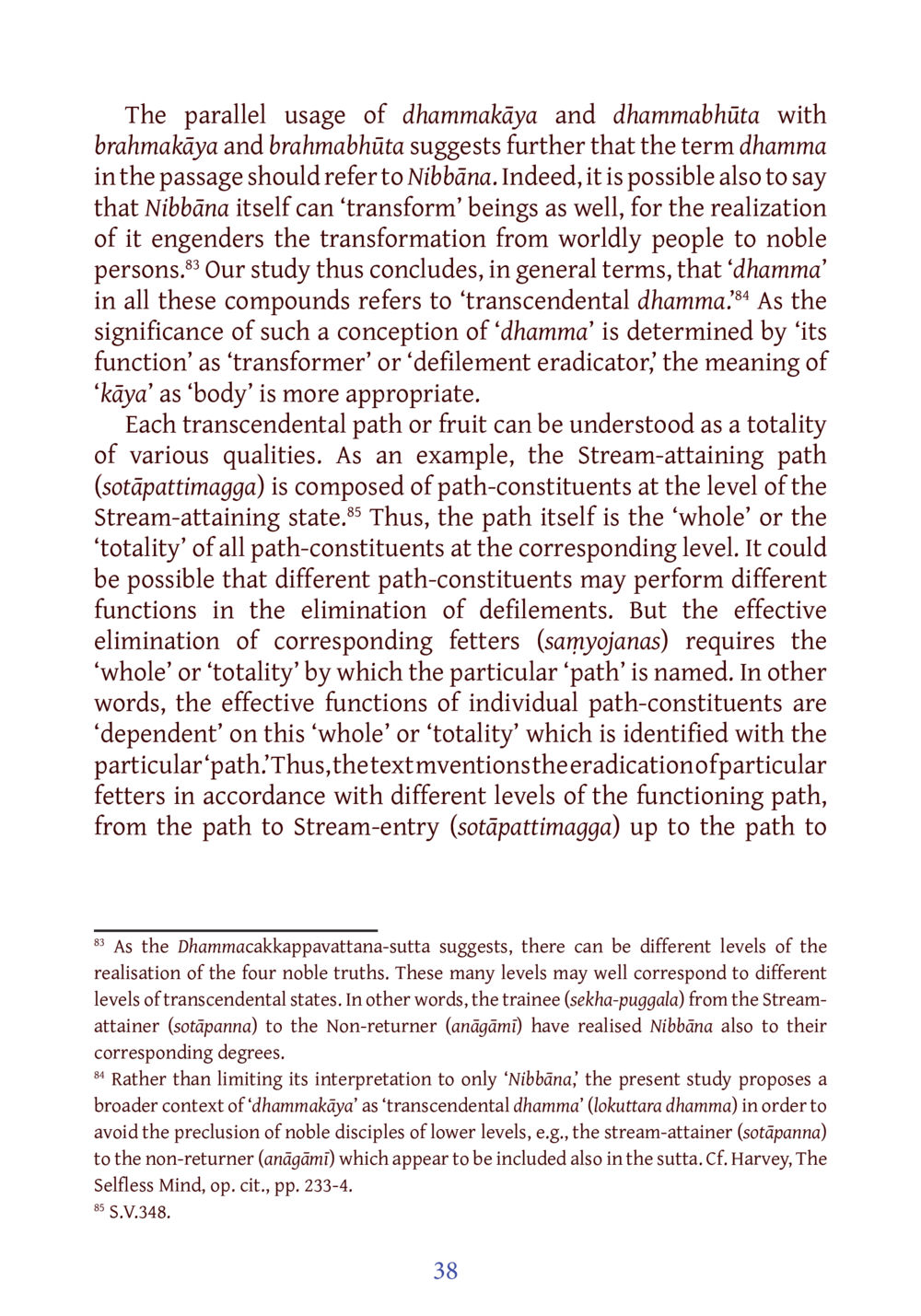Understanding Dhamma and Nibbāna : หน้า 59/141
DIRI Journal : หน้า 59/141 An exploration of the terms dhamma and Nibbāna in Buddhist philosophy, highlighting their transformative power and significance in the context of various paths to enlightenment.
3 ครั้ง

สรุปเนื้อหา
This study delves into the concepts of dhamma and Nibbāna, positing that dhamma refers to transcendental dhamma, which serves as a transformer and defilement eradicator. It explores how the realization of Nibbāna transforms individuals from worldly to noble beings, emphasizing the importance of a holistic view of the path to enlightenment. Each path to Nibbāna comprises various constituent qualities that collectively influence the elimination of defilements. The text illustrates a spectrum of understanding the four noble truths across different levels of realization, asserting that the journey from Stream-attainer to Non-returner entails varying degrees of Nibbāna realization. The analysis suggests that dhammakāya should be interpreted within a broader context, incorporating those on different levels of the path including the sotāpanna and anāgāmi. This comprehensive approach aims to integrate the teachings for all noble disciples without exclusion. For more insights, visit dmc.tv.
หัวข้อประเด็น
-Transcendental dhamma
-Transformation through Nibbāna
-Path to enlightenment
-Stream-attaining path
-Elimination of defilements
-Four noble truths
-Different levels of realization
ข้อความต้นฉบับในหน้า
หน้าหนังสือทั้งหมด













































































































































